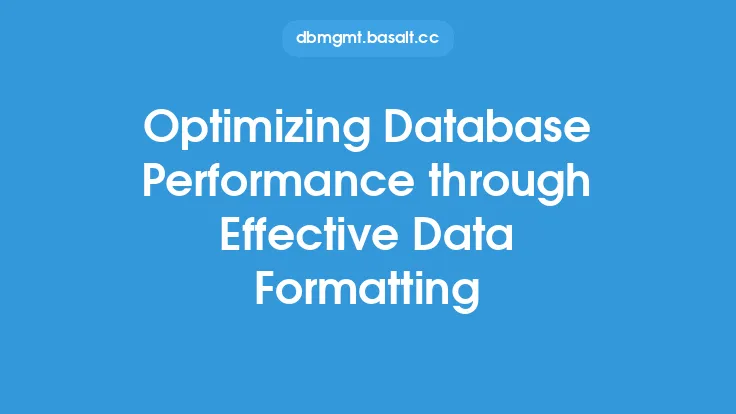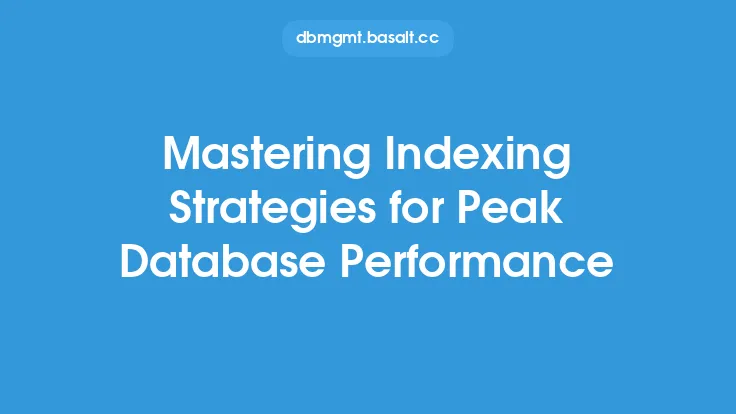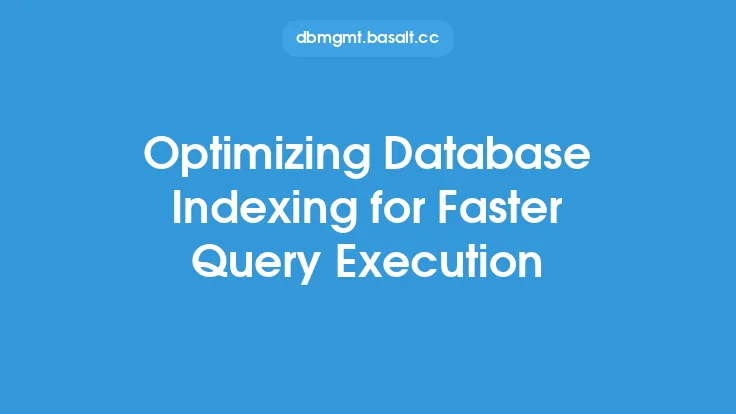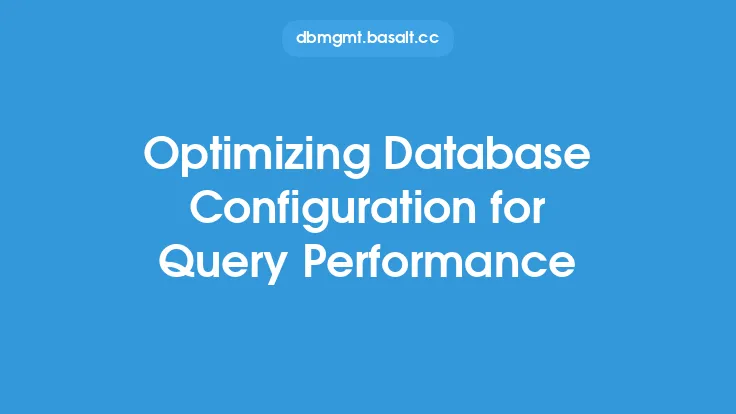Database performance is a critical aspect of any application or system that relies on data storage and retrieval. One of the key factors that can significantly impact database performance is indexing. Indexing is the process of creating a data structure that improves the speed of data retrieval operations by providing a quick way to locate specific data. In this article, we will explore the importance of regular indexing in optimizing database performance and provide guidance on how to implement an effective indexing strategy.
Introduction to Indexing
Indexing is a technique used to speed up data retrieval operations by creating a data structure that contains a copy of selected columns from a table, along with a pointer to the location of the corresponding rows in the table. Indexes can be created on one or more columns of a table, and they can be used to improve the performance of various database operations, such as SELECT, INSERT, UPDATE, and DELETE. There are several types of indexes, including B-tree indexes, hash indexes, and full-text indexes, each with its own strengths and weaknesses.
Benefits of Indexing
Indexing can provide several benefits, including improved query performance, reduced disk I/O, and increased data integrity. By creating an index on a column or set of columns, the database can quickly locate the required data, reducing the need for full table scans and minimizing the amount of disk I/O required. This can result in significant performance improvements, especially for large tables or complex queries. Additionally, indexes can help to enforce data integrity by preventing duplicate values or ensuring that data conforms to specific rules.
Types of Indexes
There are several types of indexes that can be created in a database, each with its own strengths and weaknesses. B-tree indexes are the most common type of index and are suitable for a wide range of applications. They are self-balancing, meaning that they automatically adjust to changes in the data, and they provide fast lookup, insertion, and deletion operations. Hash indexes, on the other hand, are optimized for equality searches and are often used in applications where data is frequently retrieved using a specific key. Full-text indexes are used to support full-text search operations and are typically used in applications where data is searched using keywords or phrases.
Indexing Strategies
Developing an effective indexing strategy is critical to optimizing database performance. The strategy should take into account the specific requirements of the application, including the types of queries that are executed, the frequency of data updates, and the available system resources. A good indexing strategy should balance the need for fast query performance with the need to minimize the overhead of index maintenance. This can be achieved by creating indexes on columns that are frequently used in WHERE, JOIN, and ORDER BY clauses, while avoiding indexes on columns that are frequently updated.
Index Maintenance
Index maintenance is an essential aspect of database maintenance, as indexes can become fragmented or outdated over time, leading to decreased performance. There are several techniques that can be used to maintain indexes, including rebuilding, reorganizing, and updating statistics. Rebuilding an index involves recreating the index from scratch, which can help to eliminate fragmentation and improve performance. Reorganizing an index involves reordering the index pages to improve data locality and reduce fragmentation. Updating statistics involves refreshing the index statistics to ensure that the query optimizer has accurate information about the index.
Best Practices for Indexing
There are several best practices that can be followed to ensure effective indexing. These include creating indexes on columns that are frequently used in queries, avoiding indexes on columns that are frequently updated, and using covering indexes to include all columns required for a query. Additionally, it is essential to monitor index usage and adjust the indexing strategy as needed to ensure optimal performance. Regular index maintenance is also critical to prevent fragmentation and ensure that indexes remain effective.
Common Indexing Mistakes
There are several common indexing mistakes that can negatively impact database performance. These include over-indexing, under-indexing, and creating indexes on columns that are not frequently used. Over-indexing can lead to increased overhead and decreased performance, while under-indexing can result in slow query performance. Creating indexes on columns that are not frequently used can also lead to unnecessary overhead and decreased performance.
Indexing Tools and Techniques
There are several tools and techniques that can be used to support indexing, including index tuning wizards, query analyzers, and index monitoring tools. Index tuning wizards can help to identify indexing opportunities and recommend indexing strategies. Query analyzers can help to identify performance bottlenecks and recommend indexing solutions. Index monitoring tools can help to track index usage and identify areas for improvement.
Conclusion
In conclusion, regular indexing is a critical aspect of database maintenance that can significantly impact database performance. By understanding the benefits and types of indexes, developing an effective indexing strategy, and following best practices for indexing, database administrators can optimize database performance and improve the overall efficiency of their applications. Additionally, by avoiding common indexing mistakes and using indexing tools and techniques, database administrators can ensure that their indexing strategy remains effective and efficient over time.





